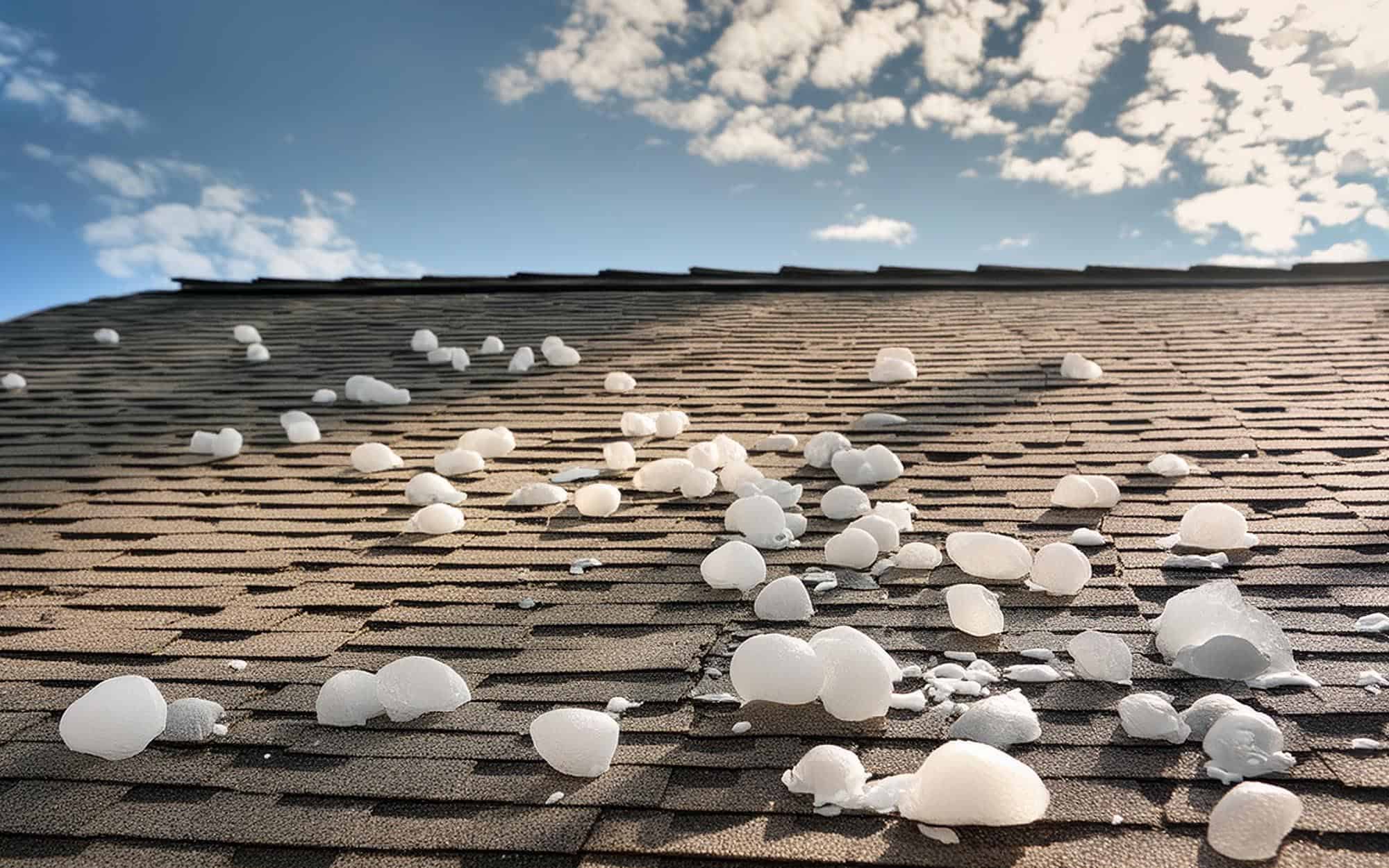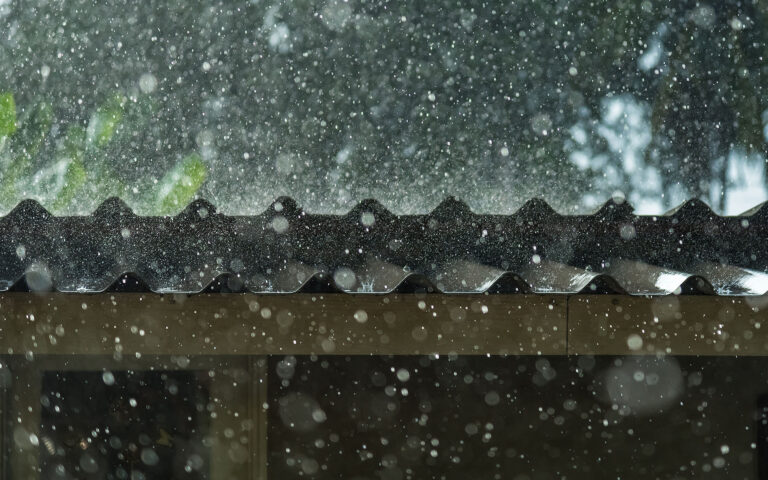Dealing with unexpected hail damage can be daunting for homeowners, especially when it comes to understanding their roof insurance coverage. Navigating the intricacies of hail damage roof insurance claims is crucial to ensuring that your home is adequately protected and that you receive the compensation you deserve.
This guide breaks down everything you need to know about hail damage roof insurance, from what it covers to how to file a claim effectively.
Understanding Hail Damage Roof Insurance Policies
Understanding the details of a roof insurance policy helps homeowners know what’s covered for hail damage. Let’s explore the nuances of hail damage roof insurance policies in more detail.
Comprehensive vs. Specific Peril Policies
There are two main types of coverage: comprehensive policies and specific peril policies. Comprehensive policies cover many incidents, including hail, while specific peril policies require hail to be listed as a covered event. A comprehensive policy generally covers unanticipated damages to your property, extending a safety net against a multitude of scenarios.
In contrast, policies tailored to specific perils demand particular attention, as coverage is rigidly defined and restricted to the dangers enumerated within the policy terms.
Simplifying Insurance Lingo: RCV vs. ACV
Navigating insurance jargon is a journey in itself, notably when deciphering the implications of Replacement Cost Value (RCV) and Actual Cash Value (ACV). Replacement Cost Value is a reimbursement framework that contemplates full restoration of your roof to its pre-damaged condition sans depreciation.
Alternatively, Actual Cash Value takes depreciation into account, offering a payout reduced by the age and wear of your roof. Knowing which sector your insurance policy falls into is important for planning future repairs.
Conditions and Exclusions to Be Aware Of
A close examination of your policy reveals conditions and exclusions that potentially modify or nullify coverage. A standard condition might be timely reporting of damage; failure to do so can result in denial of a claim. Exclusions, on the other hand, expressly delineate scenarios where the policy offers no restitution, such as neglect or pre-existing damages.
Understanding your insurance policy sets a foundation for informed actions post-hail event. Knowledge empowers homeowners to navigate hail damage roof insurance claims with confidence, ensuring they are well-prepared for the road to restoration.
Equip yourself with the knowledge to ensure your home remains secure against future hail damage using Tectum Roofing’s roof insurance claim assistance services.
How to File an Insurance Claim Due to Hail Damage: A Step-By-Step Process
Filing an insurance claim for hail damage to your roof involves several steps. Here’s a comprehensive guide to help you navigate the process:
- Assess the Damage: After a hailstorm, homeowners should inspect their roofs for visible signs of damage, such as dents, cracks, or missing shingles. It’s wise to document the damage with clear photos and detailed notes.
- Review Your Policy: Familiarize yourself with your insurance policy to understand coverage details, deductibles, and any specific requirements for filing a claim. Once you feel confident, you can reach out to your insurance provider.
- Contact Your Insurance Company: Notify your insurance company about the hail damage as soon as possible. Waiting around could lead to penalties or voiding your hail damage roof insurance claim. Provide them with the documentation you gathered during your initial assessment.
- Schedule an Inspection: Your insurance company is likely to send an adjuster to inspect the damage. Be present during this inspection to point out all areas of concern you noticed and provide additional documentation if needed.
- Obtain Repair Estimates: Get repair estimates from reputable roofing contractors like Tectum Roofing. These estimates can provide a baseline for the insurance adjuster and help ensure you receive a fair settlement.
- File the Claim: Complete any necessary claim forms provided by your insurance company. Be sure to submit all the required documentation, including your initial assessment, photos, and repair estimates.
- Review the Settlement: Once your claim is processed, review the insurance company’s settlement offer. If it meets your expectations and covers the repair costs, you can proceed with the roof repairs. Be sure to retain copies of all correspondence, documentation, and receipts related to the claim and repairs for your records. This can be useful for future reference or any potential disputes.
By following these steps, you can navigate the hail damage roof insurance claim process more efficiently and ensure any damage is repaired properly.
What to Expect During the Hail Damage Roof Insurance Claims Process
During the hail damage roof insurance claims process, there are several hoops to jump through, many of which can be unexpected surprises if they impact your coverage. Let’s go over some things you’re likely to encounter so that you’re prepared when the time comes.
Time Limits and Deadlines for Filing Hail Damage Claims
Navigating the specifics of an insurance policy reveals that filing within the designated timeframe is non-negotiable. A standard insurance policy imposes strict deadlines for filing hail damage claims, often ranging from 30 days to one year from the date of the hail event.
These deadlines are sometimes referred to as the statute of limitations for insurance claims. Missing these deadlines can lead to claim denial, leaving you without financial assistance for repairs. Respecting these timelines ensures the protection of your rights to compensation under your insurance contract.
Common Reasons for Claim Denials or Underpayments
Insurance companies sometimes deny claims if they conclude that the damage was pre-existing, not caused by hail, or falls outside of the policy’s covered perils. Insufficient documentation or failure to file a claim within the designated time frame can also result in denial or reduction of payout. Moreover, disagreements may occur over the scope of the damage, with insurers attributing some damage to normal wear and tear rather than the recent hail event.
Temporary Repairs and Costs
Making temporary repairs, such as covering holes with tarps or sealing leaks, is often necessary to prevent further damage after a hailstorm. These interim solutions can be costly, and homeowners might need to cover these expenses upfront. It’s important to keep receipts and documentation, as the insurance company can typically reimburse these costs later.
Dispute Resolution Options
When conflicts arise, policyholders have multiple routes to resolve disputes. Internal appeals can be initiated by requesting a second examination or reconsideration from the insurance company. External review involves seeking appraisal or mediation, an objective assessment by third-party experts to determine fair compensation. In certain jurisdictions, policyholders are entitled to engage in arbitration or to pursue legal action if the dispute remains unresolved.
If you need a professional roof provider who can assist you through the hail damage roof insurance claims process, Tectum Roofing is here to help.
Simplify Your Roof Damage Insurance Claims With Tectum Roofing
At Tectum Roofing, our roofing experts are dedicated to providing ongoing assistance with hail damage roof insurance claims, ensuring you receive the coverage you need. We are committed to safeguarding your residential space against potential weather-related damage, be it hail storms, wind, snow, or debris-related issues.
Contact Tectum Roofing today to keep your property safe, secure, and well-protected with our comprehensive roofing services.




